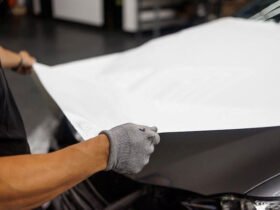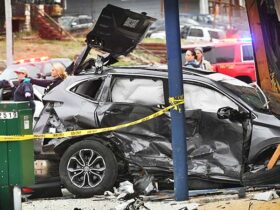Charlotte’s bustling streets and vibrant energy are undeniable, but unfortunately, that comes with a downside: a high incidence of traffic accidents.
According to recent data, Charlotte ranked number one in North Carolina for car crashes. There were over 30,000 non-fatal injuries sustained from 2019 to 2021 alone.
In the unfortunate event of an accident, the knowledge of proper procedures is vital. Don’t worry; this guide will take care of that.
Let’s walk you through the crucial actions you must take immediately following a collision in Charlotte.
Prioritize Your Safety
Begin by checking for injuries. If others are injured, dial 911 right away for emergency medical help. And always remember one thing. Avoid moving anyone with serious injuries unless it’s critical to do so. Why? Because if there’s an injury to the spine, you may risk a permanent disability by moving the person.
If it’s possible and safe to do so, move your vehicle to the side of the road or a safe location away from traffic. This will do two things: help prevent further accidents and ensure emergency responders can reach you easily. Turn on your hazard lights to alert other drivers to the situation.
If it’s dark outside, turn on your interior lights and use a flashlight or your cell phone light to signal to other drivers. If available, set up flares or reflective triangles to enhance your vehicle’s visibility. Stay in your car with your seatbelt on until assistance arrives unless you’re in immediate danger.
Another crucial step after ensuring your safety is contacting a qualified lawyer. Having car accident lawyers by your side can be invaluable in dealing with insurance claims, determining liability, and protecting your rights. Besides, given the surge in Charlotte car accidents lawyers are well-versed in assessing the situation, gathering evidence, negotiating, and protecting your rights, all to ensure you receive just and fair compensation for your injuries and losses.
Call Law Enforcement
Your next priority, after ensuring everyone’s safety, should be to contact the authorities. No matter how minor or major the collision, reporting it is crucial. Even a small mishap like a fender bender can later lead to disagreements.
Police officers are skilled in evaluating the accident site, documenting evidence, and conducting witness interviews. Their expertise can help determine faults and ensure a fair resolution for all parties involved.
Remember, memory can be unreliable, and details can be easily forgotten or misinterpreted as time passes.
A police report acts as an objective record of the accident, documenting the facts as they were observed at the time. This can be crucial in supporting your insurance claim or any legal proceedings that may arise.
Exchange Information
Once the immediate safety concerns are out of the way, the next step is swapping information with those involved in the accident. Get their full name, phone number, and address.
Another thing to ask for is their insurance information, driver’s license number, and vehicle registration number. Just make sure that you verify everything by looking at their license and insurance card.
Additionally, jot down other details about their car, like the make, model, and color. While you’re at it, note the exact spot where the accident happened. Include any nearby landmarks or cross streets to help pinpoint the location later on.
If anyone saw the accident happen, ask them for their name and how to get in touch with them. Their account of what happened could be really helpful when figuring out who’s at fault.
Document the Scene
You may exchange information with other drivers, but that’s just the first step. In such cases, true protection comes from thorough documentation. So, if you truly want to protect yourself, document the scene thoroughly.
Your memory may fade over time, and it most likely will because an accident is a traumatic event, and memories can get mixed up. However, photos and videos will preserve an accurate record of the incident.
Take pictures of all vehicles involved. Showcase the damage from multiple perspectives. Don’t limit yourself to close-ups. Take a step back and photograph the overall scene. Include the road layout, any intersections, and any relevant traffic signs or signals.
And if you see any physical evidence on the road, like skid marks, debris, or even personal belongings, document those as well. These details can be crucial in reconstructing the events leading up to the crash and may be helpful for insurance claims or legal proceedings.
If your vehicle has a dashcam, save the footage and share it with your insurance company or lawyer. Dashcam footage can provide invaluable evidence and may actually be decisive in clarifying any disputes.
So, take the time to document the scene immediately after the accident because this is an important step in protecting your interests and ensuring a smoother resolution process.
Common Mistakes to Avoid After a Car Accident
In the aftermath of a car accident, it’s easy to make unintentional mistakes that can jeopardize your well-being and your legal rights. Being aware of these common pitfalls can help you avoid unnecessary complications and protect your interests.
- Leaving the Scene: Never leave the scene of an accident before exchanging information with the other parties involved and contacting the authorities. Leaving the scene could be construed as a hit-and-run, which carries serious legal consequences.
- Admitting Fault: Even if you feel you may have contributed to the accident, refrain from admitting fault at the scene. Determining liability is a complex process that involves analyzing various factors. Let the insurance companies and legal professionals investigate and determine fault.
- Minimizing Injuries: It’s natural to want to downplay injuries, especially if you’re feeling adrenaline or shock. However, some injuries may not manifest symptoms immediately. Seek medical attention promptly, even if you feel fine. Delaying medical care could jeopardize your health and complicate your insurance claim.
- Not Gathering Evidence: The information and evidence you collect at the scene are crucial for your case. Take photos of the vehicles, the damage, and the surrounding area. Gather contact information from witnesses. This evidence can be invaluable in proving fault and securing compensation.
- Not Contacting an Attorney: Sometimes accidents seem small but can have long-term consequences. That’s why consulting with an attorney can be helpful, as they understand your legal rights and ensure you receive fair compensation for your injuries and damages.
By avoiding these common mistakes, you can protect yourself legally and financially and ensure you have the best possible outcome after a car accident. Your actions in the immediate aftermath of an accident can have a significant impact on your well-being and your ability to recover from the incident.
Conclusion
No one even wants to think about being in a car accident, but being prepared can make a world of difference. If you follow the steps mentioned above, you’ll be able to ensure your safety and that of others involved. You’ll also be equipped to navigate the complex aftermath and protect your rights. And document everything because evidence can help you get appropriate legal assistance. Stay informed, stay safe, and drive responsibly.













